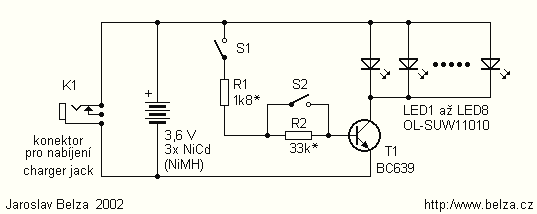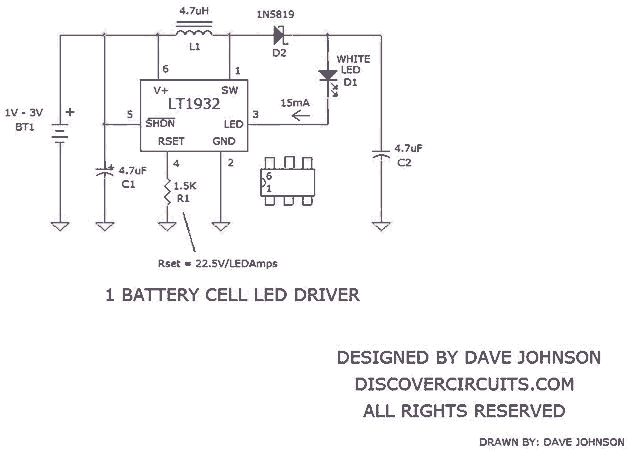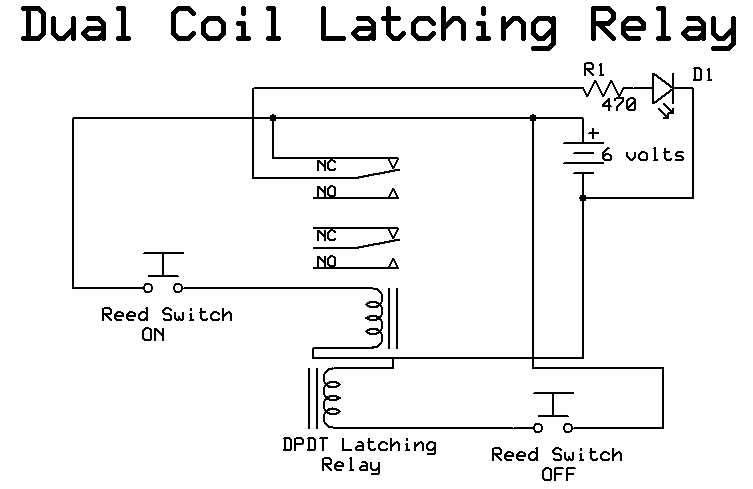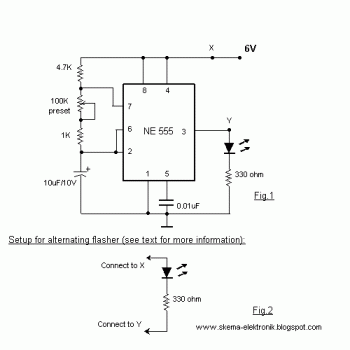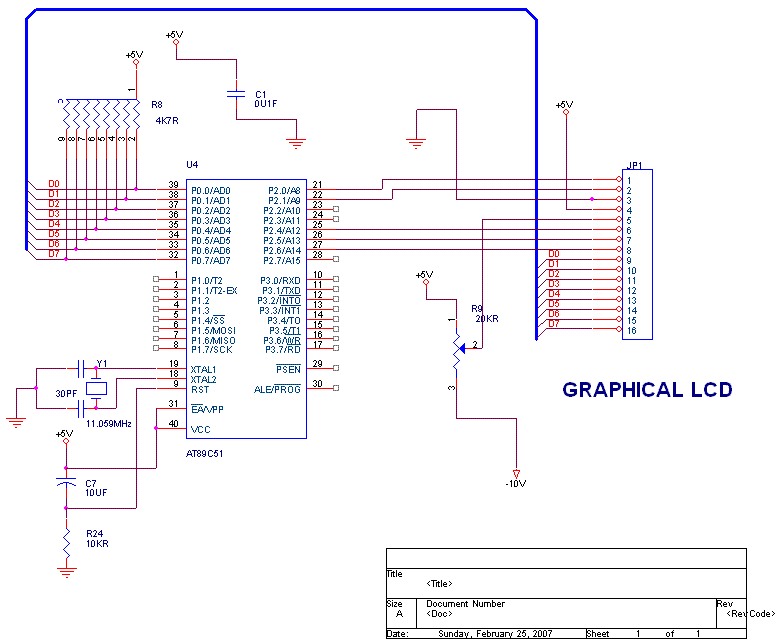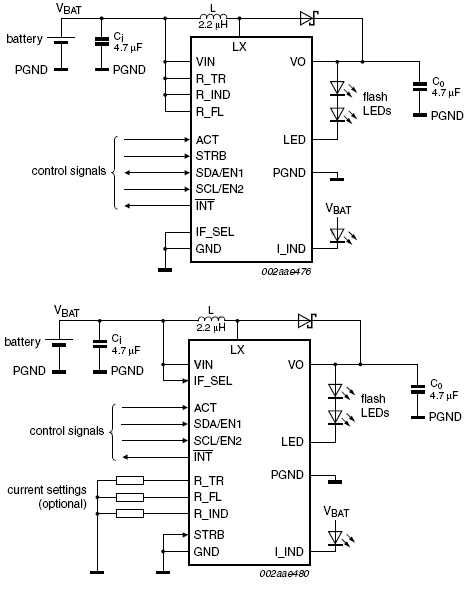
White LED Step-Up Converters with Schottky
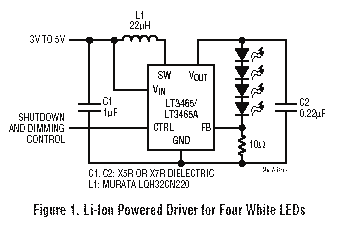
The LT3465/LT3465A are step-up DC/DC converters designed to drive up to six LEDs in series from a Li-Ion cell. Series connection of the LEDs provides identical LED currents and eliminates the need for ballast resistors. These devices integrate the Schottky diode required externally on competing devices. Additional features include output voltage limiting when LEDs are disconnected, one-pin shutdown and dimming control. The LT3465 has internal soft-start. The LT3465 switches at 1.2MHz, allowing the use of tiny external components. The faster LT3465A switches at 2.4MHz. Constant frequency switching results in low input noise and a small output capacitor. Just 0.22µF is required for 3-, 4- or 5-LED applications. The LT3465 and LT3465A are available in low profile (1mm) 6-lead SOT-23 (ThinSOT) packages.
The LT3465 and LT3465A are highly efficient step-up DC/DC converters specifically engineered to drive multiple LEDs in series configurations, which is advantageous for achieving uniform brightness across the LEDs and simplifying circuit design by eliminating the need for ballast resistors. The integration of the Schottky diode within the device reduces component count and board space, enhancing the overall design efficiency.
In operation, these converters utilize a constant frequency switching mechanism, with the LT3465 operating at 1.2MHz and the LT3465A at 2.4MHz. This high switching frequency allows for the use of smaller external components, which is particularly beneficial in compact applications such as portable devices powered by Li-Ion cells. The low input noise generated by the constant frequency operation minimizes potential interference with other circuit components.
The output voltage limiting feature is crucial for protecting the circuit when LEDs are disconnected, ensuring that the converter does not produce excessive voltage that could damage the LEDs. Additionally, the one-pin shutdown function allows for easy control over the device, enabling users to turn off the converter when not in use, thereby conserving battery power.
The internal soft-start functionality of the LT3465 mitigates inrush current during startup, which can be particularly important in battery-powered applications to prevent voltage sag and ensure reliable operation.
For applications requiring a minimal footprint, both the LT3465 and LT3465A are available in a low-profile 6-lead SOT-23 package, measuring just 1mm in height. This compact design is ideal for space-constrained environments while still providing robust performance for driving three to six LEDs with only a small 0.22µF output capacitor, making these converters suitable for a wide range of lighting applications in consumer electronics.The LT®3465/LT3465A are step-up DC/DC converters designed to drive up to six LEDs in series from a Li-Ion cell. Series connection of the LEDs provides identical LED currents and eliminates the need for ballast resistors.
These devices integrate the Schottky diode required externally on competing devices. Additional features include output voltage limiting when LEDs are disconnected, onepin shutdown and dimming control. The LT3465 has internal soft-start. The LT3465 switches at 1.2MHz, allowing the use of tiny external components. The faster LT3465A switches at 2.4MHz. Constant frequency switching results in low input noise and a small output capacitor. Just 0.22µF is required for 3-, 4- or 5-LED applications. The LT3465 and LT3465A are available in low profile (1mm) 6-lead SOT-23 (ThinSOT¾) packages. 🔗 External reference
The LT3465 and LT3465A are highly efficient step-up DC/DC converters specifically engineered to drive multiple LEDs in series configurations, which is advantageous for achieving uniform brightness across the LEDs and simplifying circuit design by eliminating the need for ballast resistors. The integration of the Schottky diode within the device reduces component count and board space, enhancing the overall design efficiency.
In operation, these converters utilize a constant frequency switching mechanism, with the LT3465 operating at 1.2MHz and the LT3465A at 2.4MHz. This high switching frequency allows for the use of smaller external components, which is particularly beneficial in compact applications such as portable devices powered by Li-Ion cells. The low input noise generated by the constant frequency operation minimizes potential interference with other circuit components.
The output voltage limiting feature is crucial for protecting the circuit when LEDs are disconnected, ensuring that the converter does not produce excessive voltage that could damage the LEDs. Additionally, the one-pin shutdown function allows for easy control over the device, enabling users to turn off the converter when not in use, thereby conserving battery power.
The internal soft-start functionality of the LT3465 mitigates inrush current during startup, which can be particularly important in battery-powered applications to prevent voltage sag and ensure reliable operation.
For applications requiring a minimal footprint, both the LT3465 and LT3465A are available in a low-profile 6-lead SOT-23 package, measuring just 1mm in height. This compact design is ideal for space-constrained environments while still providing robust performance for driving three to six LEDs with only a small 0.22µF output capacitor, making these converters suitable for a wide range of lighting applications in consumer electronics.The LT®3465/LT3465A are step-up DC/DC converters designed to drive up to six LEDs in series from a Li-Ion cell. Series connection of the LEDs provides identical LED currents and eliminates the need for ballast resistors.
These devices integrate the Schottky diode required externally on competing devices. Additional features include output voltage limiting when LEDs are disconnected, onepin shutdown and dimming control. The LT3465 has internal soft-start. The LT3465 switches at 1.2MHz, allowing the use of tiny external components. The faster LT3465A switches at 2.4MHz. Constant frequency switching results in low input noise and a small output capacitor. Just 0.22µF is required for 3-, 4- or 5-LED applications. The LT3465 and LT3465A are available in low profile (1mm) 6-lead SOT-23 (ThinSOT¾) packages. 🔗 External reference
